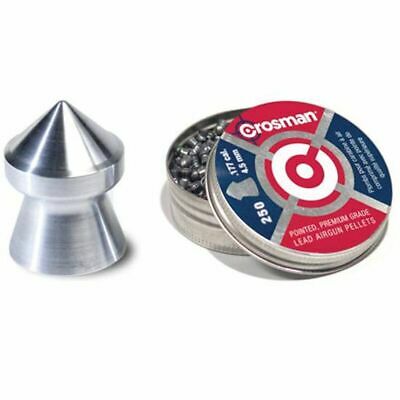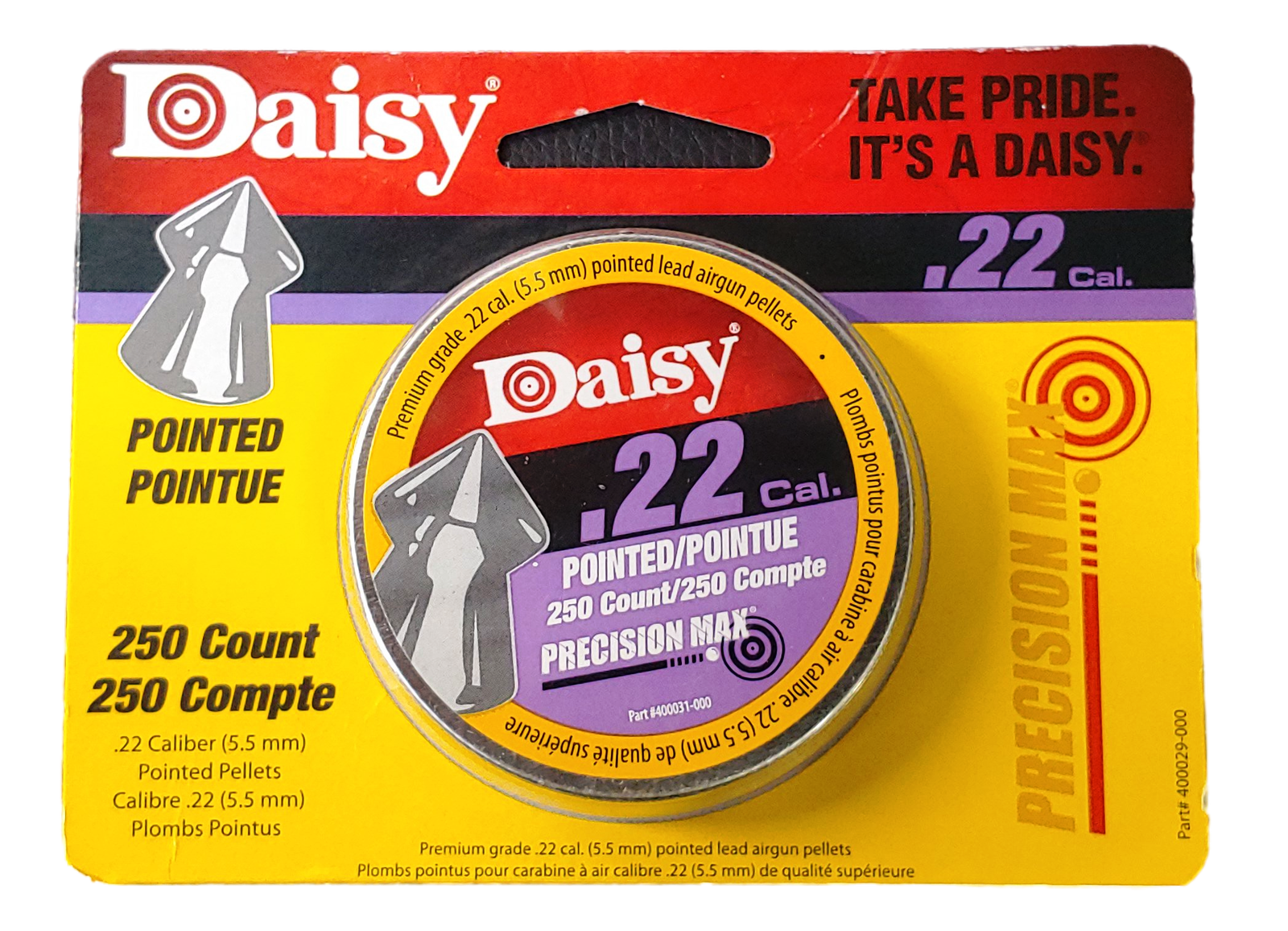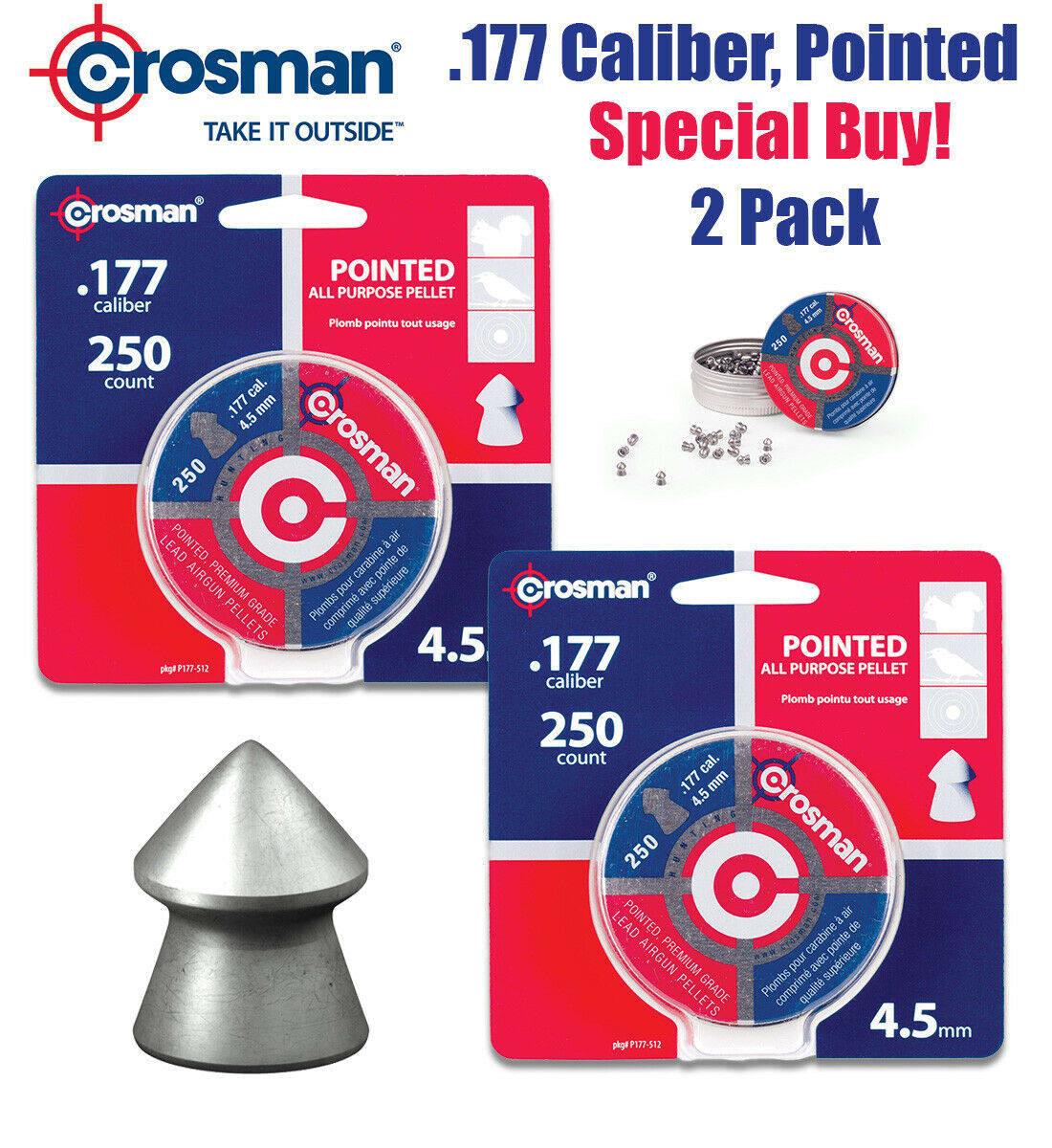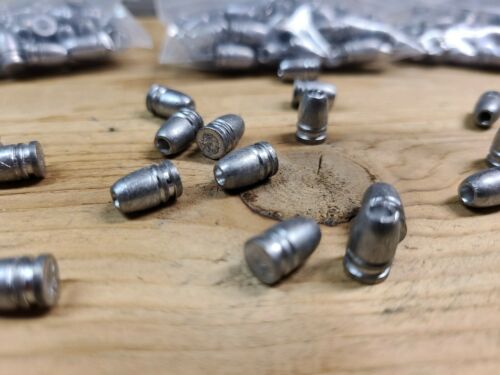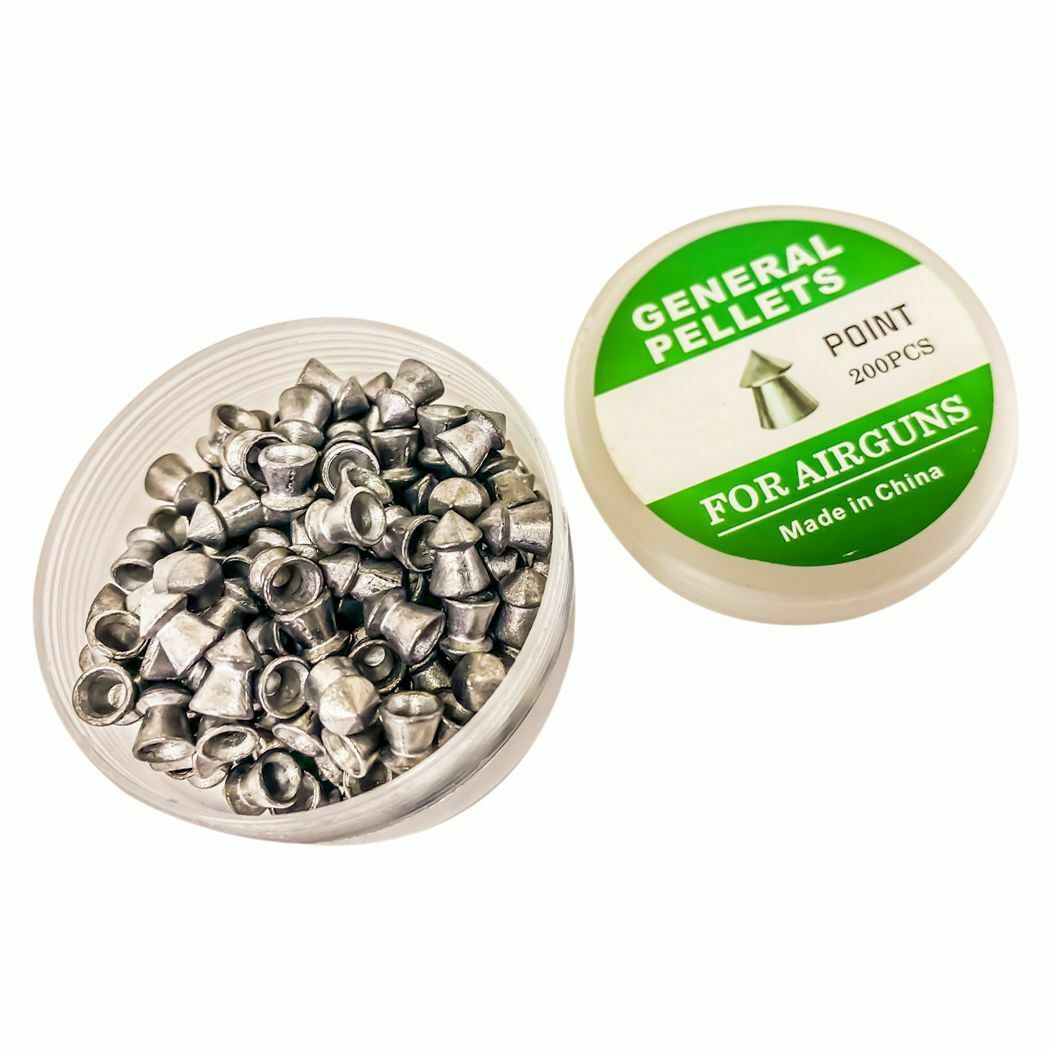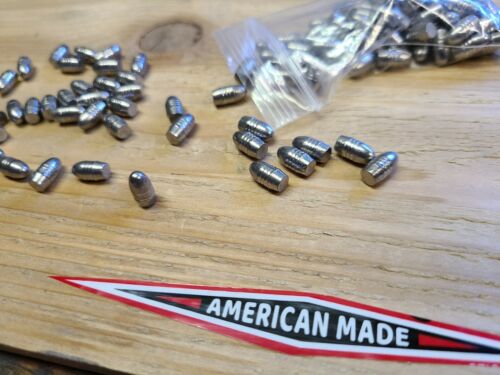-40%
Nielsen Specialty Ammo - .250 Cal (.249) - 26.8 Grain - 325 Count Slugs
$ 15.83
- Description
- Size Guide
Description
Nielsen Specialty Ammo Slugs for Pellet Guns - .250 Cal (.249) - 26.8 Grain - 325 CountCondition is "New". Shipped with USPS Priority Mail.
These are the newest slugs from Nielsen's high speed press. This is a hollow point nose with a flat base.
Number of slugs per box: 325
Length is .290"
BC: 0.088
Diameter available in this slug: .249
(being a little short it will measure between .249 and .2495.
You may notice a white film on the inside of the bag or on the slugs. This is lube and is supposed to be there. It helps with barrel leading and improves accuracy.
The image provided with the grouping is from a .25 Benjamin Marauder. It is an 8 shot group at 25 yards. The slugs were chronoed from a stock Marauder at around 775 FPS. Center to center measurement on the group is right around .5". This would most likely be an even tighter group with a velocity between 850 and 950 FPS.
Nielsen Specialty Ammo Pellets VS Cast Bullets
Why are Nielsen Specialty Ammo swaged pellets better than a cast bullet used in a pellet gun?
This question was asked by my wife when I invested in commercial swaging equipment to produce them. I brought her out to the garage to compare my cast bullets I was using in PCP air rifles to compare to my swaged pellets we were test firing the previous day.
I used a micrometer to begin to show the difference. With a micrometer you could easily see the cast bullet is not perfectly round. This means it is slightly heavier on one side as it is on on other. I showed this by measuring the diameter of the bullet and twisting the bullet 45 degrees and measuring again. The readings were larger or smaller as I turned the bullet. The bullets (sold as pellets) were purchased from one of the big pellet gun retailers.
Some of this would be less noticeable if the bullet was put through a sizer but the sizer would not fix the lopsided weight. The sizer will make the bullet the diameter of the sizer but will do so by making the bullet slightly longer. Now you simply have a longer lopsided bullet. At shorter ranges this will make little difference. But put some lead out to the longer range shots you will notice the groups opening up.
Our swaged pellets are perfect each time they come out of our hydraulic press. The press is designed to give the perfect pressure for the perfect amount of dwell time. The result is a perfect pellet each time. If you need to size the pellet it is no problem. You start with a perfectly round pellet and the sizer will make is a slightly longer perfectly round pellet. A sizer can not make a lopsided bullet true so you must start with perfection to end in perfection.
Why is a swage press more consistent than cast molds?
Casting requires extreme heat to liquefy the lead and the mold must be heated to get a clean cast. Simple physics. Heat will make the mold expand and as it cools it will contract. Depending on how hot the mold or lead was at the time of the cast will make variations in the final product. Many molds have two to six bullet molds build into each set. The molten lead is poured into each cavity one at a time. So the first bullet goes into a cooler mold while each consecutive bullet goes into a slightly hotter mold from the previous cavity heating up the mold.
Casting in molds is not easy to do with pure soft lead. Often times tin is added to the lead mixture so the mold fills out completely. With out tin, the final bullets are wavy and often not fully complete. This can leave air bubbles and slight lopsided bullets. When the tin is added it flows much easier and the bullet quality is significantly increased in looks and consistency. Although it helps, it does not fix the problem with the varying heat of the lead and mold. More of a problem with adding tin is it increases the hardness of the lead often referred to as the BHN (Brinell Hardness Number) of the lead.
Swaging is actually easier to do with soft lead with a BHN of 5-6 (referred to as pure lead). With swaging it is the opposite, the softer the lead the better it fills the die and the eisier it is on our very precise equipment. The lead used to form the pellet is at room temperature. My hydraulic machine can swage much harder pellets but is not what our air guns want and need. When the press pushes the lead with extreme pressure to form the pellet all the air bubbles are pushed out. The excess lead is pushed through bleed holes so the final pellet is perfect each time with weight differences of less than 1%. This is up to 10 times more consist than cast bullets.
You will often see cast bullets being pasted off as "soft lead" cast. This is true compared to cast bullets that are normally cast with lead of a BHN of 16-24. I have tested some of these "soft" lead bullets and the BHN comes out above 10 - way too high for pellets in our PCP air rifles.
Why do you need soft lead pellets in your air rifle?
There are a couple of reasons. The air rifles do not have enough power to mushroom these hard pellets. The air rifle pellets need to mushroom in order provide a good dispersion of energy inside the target. Hollow point bullets do a good job of this but any pure lead pellet will mushroom nicely. The empty cavity allows the bullet to fold into the space easier and flatten out widening the wound channel. This also slows the projectile down and allowing the target to absorb the energy.
Some will argue if a bullet should stay inside the animal or pass right through it and come out the other side. I for one am a firm believer the bullet should penetrate and stay inside of the target. If the bullet enters the target with 150 FPE and left the target with 50 FPE then the target absorbed 100 FPE. If the same projectile stays inside the target, then it absorbed all of the 150 FPE.
We use a soft lead to both swage and cast slugs. Our lead is 99 percent pure lead mixed with 1% tin. This gives a BHN of 6 which is soft and perfect combination for airguns.
Also the soft lead pellets will grip the rifling much better than harder lead bullets/pellets. The soft lead will allow the pellet to be cut by the rifling and provide a better seal which will increase accuracy and seal the bore increasing velocity and energy down range. Since most air rifle barrels are made with materials to except pure lead pellets, using harder lead can wear out the barrel much faster. You can shoot the accuracy right out of the barrel.
Our air rifles are designed to be used with soft lead. The barrels are made of materials to have soft lead pass through them. Harder lead is going to wear our soft metal barrels out quicker which eventually will effect accuracy.
Soft lead will also allow the pellet to engage the rifling easier to cut the grooves in the pellet as it travels the barrel. The easier those rifle groves are to cut the faster the pellet can get down range. Soft pellets will use up less of the energy the pellet guns are producing to exit the muzzle and increase muzzle velocity.
What other advantages are there to swaging pellets over cast molds?
Swaging offers a lot of flexibility over casting. We do have a die for each caliber but the
same
die can produce the lightest pellet we sell to the heavies pellet. It is done by adjusting the machine with the right amount of pressure and having the correct core for the chosen weight. We can also change punches to create different bases and noses. We can go from a round nose to a hollow point to a conical in a matter of minutes.
We can also make our hollow point the exact same weight as a round nose. In a cast mold, when you place the pins in for the cavity of the hollow point there is no lead poured there so the weight will drop. Our machines simple adjust the punch and die to make the pellets the same weight. In this case the pellet will come out slightly longer.
Electronically controlled hydraulic press like ours takes the operator error out of the equation. The operator does have to set the machine up correctly in the beginning but once up and running the machine controls the pressure and dwell time to hold the pressure. The operator hand feeds each pellet in, and inspects each pellet out.
When the blank core is feed into the press it takes it and pushes it through the die at the exact same pressure as each pellet before it and for the exact same amount of time. This provides a consistent pellet each and every time. An operator must feed each pellet by hand into the machine and can inspect each pellet when it comes out.
All and all swaging is a far superior manufacturing option for high powered PCP air rifles. The ability to use BHN 5-6 soft lead, consistent weights, roundness and accuracy can not be reproduced by casting harder lead bullets to use in our soft lead pellet rifles and pistols.




